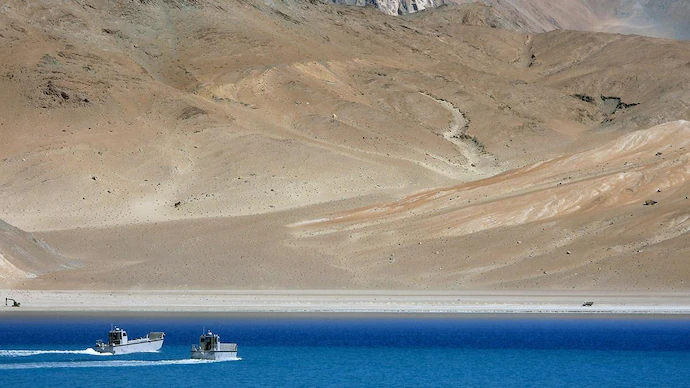Days after a Pentagon file highlighted China’s competitive and coercive behaviour in opposition to its neighbours—especially India—trendy satellite tv for pc snap shots have shed extra mild at the same. China’s People’s Liberation Army (PLA) has constructed a double bridge throughout the Pangong Tso, connecting the northern financial institution of the lake with the southern financial institution for fast motion of reserves and fight energy on both aspect.
The bridge is 10 metres huge and approximately 450 metres lengthy and permits for quicker motion of troops or even short induction of armoured motors through the PLA. It offers clean get entry to from the PLA’s Moldo garrison to the Sirjab area, that may offer the Chinese aspect significant benefit. The bridge will reduce the space from Rudok—the PLA’s essential base servicing its deployments withinside the Pangong Tso area—to the Line of Actual Control (LAC) to approximately 50 km, from the present over two hundred km.
Military observers declare the bridge offers China operational benefit as they’ve carried out a complementary technique to guide both financial institution of the Pangong Tso, therefore neutralising the Indian army’s tactical benefit. “With no habitation withinside the area, those are exceptional army-use bridges. Infrastructure improvement in proximity is giving a clean message of [Chinese] intent,” says Lt Gen. Rakesh Sharma, former corps commander of the Indian Army’s Leh-primarily based totally 14 Corps.
The Pangong Tso and its environment are a part of the vicinity that had sparked the army stand-off among India and China in May 2020. A month later, a violent conflict withinside the Galwan Valley—placed just a few kilometres from the Pangong lake—had claimed the lives of as a minimum 20 Indian infantrymen and an unspecified quantity of PLA troopers. Both facets have stationed lots of troops, artillery, tanks and different heavy weaponry withinside the vicinity.
The Indian and Chinese army have held sixteen rounds of corps commander-stage conferences to deescalate tensions withinside the aftermath of the fierce clashes in Pangong Tso and Galwan valley in 2020. The remaining spherical of talks become held in July this year, and given that then each facets had been running toward solving a date for the following spherical of interactions. Indian and Chinese troops have, meanwhile, disengaged on the Gogra-Hotsprings at the LAC in japanese Ladakh. However, the variations over Charding Nilung Nullah junction in Demchok and the Depsang Bulge (patrol factors nine to 13) are but to be resolved. PLA troops in Depsang are blockading Indian patrol factors 10, 11, 11A, 12 and 13.
Last month, a Pentagon file had claimed that the continuing army stand-off among India and China in japanese Ladakh had ended in a vast pressure build-up through the Chinese army and status quo or enforcement of ahead positions. The file, titled ‘Military and Security Developments Involving the People’s Republic of China (PRC) 2021’, stated: “At the peak of the border stand-off among the PRC and India in 2020, the PLA hooked up a fibre optic community in faraway regions of the western Himalayas to offer quicker communications and accelerated safety from overseas interception.” This set-up, the file said, gave them get entry to to near-real-time ISR (intelligence, surveillance and reconnaissance) and situational facts for streamlining decision-making strategies and shortening reaction timelines.



